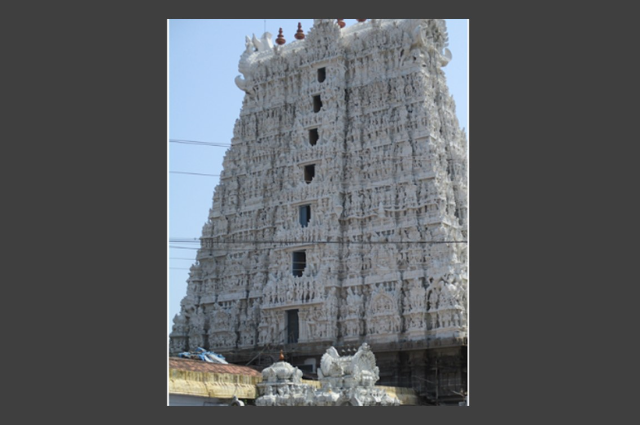
photo attribution: Wael Hadi, CC BY-SA 4.0
via Wikimedia Commons
India is Not a rich nation. It's evident from its pathetic per-capita income figure. As I see it, over 90% of Indians are Below the Poverty Level. India is also the 2nd-largest populous country of the world. Thus, India has earned the dubious distinction of housing the largest army of poor folks. There're also two more things India has No dearth of : 1. Fake sadhus; 2. Awesome temples. Nevertheless, I don't think there exists any Sensible Indian that would differ with me about my view that the first item on this list is Not in the least something that should make a civilised nation feel proud of. But, what about the 2nd stuff, i.e. the huge number of awesome temples? Does the luxury of so many temples Really become a country like India?
State of the Indian Union
Let's now have a look at the true status of India and Indians in the world. India's global ranking in human development is 131* as against the Superpower USA's 17**. India's Gross national income per capita was $6 681* in 2020 (@ constant 2017 PPP $) as against the USA's $63 826** which is more than 9 times the former figure. Evidently, conditions of Indians leave a lot to be desired.
Furthermore, according to the UNDP Human Development Reports, India's poverty ratio is 27.9%. Nevertheless, I consider it unacceptable totally in the light of the fact that not more than 1% Indians pay income taxes***, which means around 99% of Indians are in the eyes of the Govt of India so poor as to deserve full exemption from the payment of income taxes. And further, according to a report released in 2018 by the Centre for Sustainable Employment at Azim Premji University , “ 82% of male and 92% of female workers earn less than [Rs]10,000 a month, “ while the minimum salary recommended by the seventh Central Pay Commission (CPC) is “ [Rs]18,000 per month. “**** As I see it, the monthly income figure of Rs 18 000, as recommended by the seventh CPC, deserves to be taken as the Right poverty threshold for India in this 21st century, the Space age. On the basis of this, I think I'm a hundred percent Right to conclude that the army of Indians below the poverty level is comprised of no less than 90% of the country’s population. No wonder that 'In the 2021 Global Hunger Index, India ranks 101st out of the 116 countries ... With a score of 27.5, India has a level of hunger that is serious.'***** Does this India deserve the silly luxury of new sumptuous temples Really?
*Human Development Reports(India)
**Human Development Reports(USA)
***Only 1% Indians pay income tax, govt tells Lok Sabha
****SWI 2018, Fig 4.10 & Fig 5.5; STATE OF WORKING INDIA 2018 REPORT FIGURES
*****India's current ranking in the World Hunger Index

photo attribution: Abhishek Barua, CC BY-SA 3.0
via Wikimedia Commons
Rationale behind the Temple Culture
The Hindus as well as Hindutvaites of India are most bizarre people. They claim to be followers of the Vedic faith known as Sanatana dharma but keep mum on the fact that No such terms as Hindu, Hinduism, Hindutva, etc. occur in the Vedas or any other stuff they regard as their Holy Writ. They do not dare to respond to the assertion that religion in itself is a load of Rubbish or the view that there exists Not a grain of Truth in any religious faiths, theirs included. They love to stay mute in response to the claim that Sanatana dharma does not endorse building temples, nor does it endorse worshipping idols. The fact of the matter is Sanatana dharma preaches the attainment of moksha defined as the liberation of your atman (soul) from bondage to life as the Supreme goal of your life (Moksha; Moksha; moksha; Moksha: Liberation/Salvation). This is the essence of Sanatana dharma. A true follower of the Sanatana dharma must embrace sannyasa and go to a solitary mountain cave or retreat to the solitude of a dense forest to get himself lost in deep meditation until death and thus attain moksha when his atman gets complete freedom from the infinite cycle of life, death & rebirth and as a result, ceases to be reborn to lead a life full of sorrow and suffering (sannyasi; Ashrama; Nirvana Upanishad; Sanyasa in Vedic tradition). Evidently, the stuff like idol worship as well as the culture of temples housing idols seems to have No place in the Vedic Sanatana dharma.
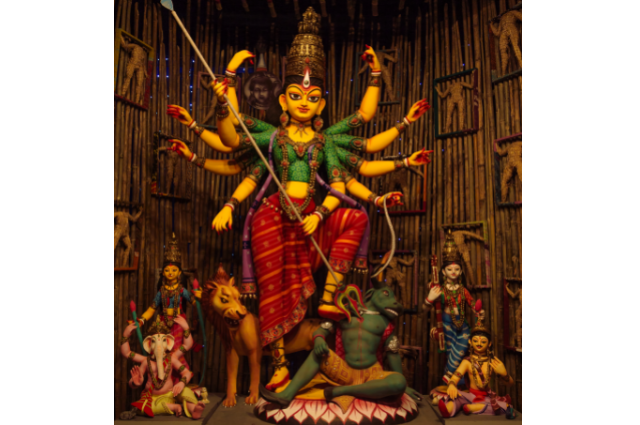
Photo Attribution: Subhrajyoti07, CC BY-SA 4.0
via Wikimedia Commons
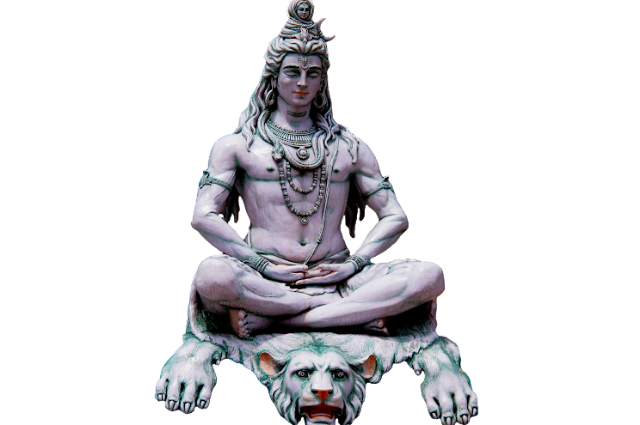
Swayambhu Shiva with a Belly button
photo attribution:
InspiredImages, CC0, via Wikimedia Commons
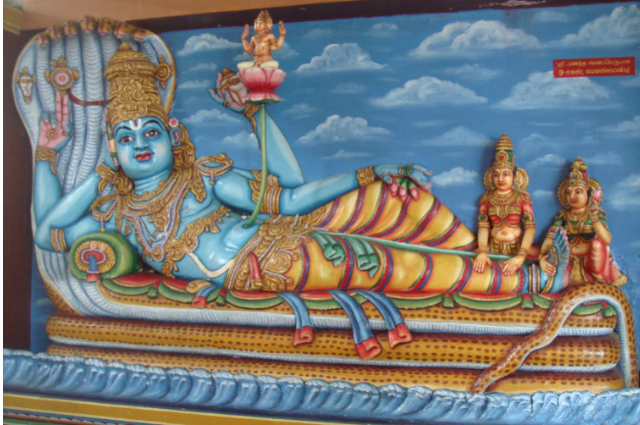
Vishnu, another Swayambhu god, with a Navel supporting a stem with a Lotus (with the god Brahma seated on it)
photo attribution: Leon Meerson, CC BY-SA 2.0
Vivekananda, the famed Brahmajnani Hindu monk, used to be, like his spiritual guru Ramkrishna Paramhamsa, fond of worshipping idols of a naked female (the goddess Kali in bhaktas' eyes) and continued it throughout his spiritual life. A famous saying of his was: 'I see God, therefore He exists.' (The Complete Works of Swami Vivekananda | Volume 1 | Lectures And Discourses) But then, he also said, 'A God known is no more God; ... He cannot be known He is always the Unknowable One.' ( The Absolute and Manifestation – Swami Vivekananda ) So, we see Vivekananda claimed to have seen 'God' that he claimed to be 'Unknowable' too. He further said: 'He [God] is the Essence of our souls, [so] we cannot project Him outside ourselves' the way we can project the 'pictures' in our mind of chairs, etc. (i.e. all the things visible to eyes) outside our mind. (ibid) The Brahmajnani sannyasin said all these words to explain why he thinks his beloved God is Not visible, hence Not knowable. 'You cannot know your own self;' he also remarked by way of explanation, 'you cannot move it out and make it an object to look at, because you are that and cannot separate yourself from it.' (ibid) Still, the Brahmajnani claimed that he clapped eyes on 'God' that had looks of a naked female and worshipped a clay-idol with similar looks as his 'God' till his death.
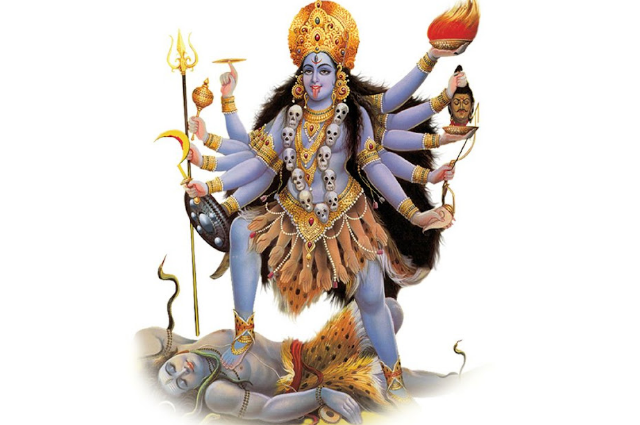
Naked goddess MahaKali
attribution: Asha Patel; flickr
Another wise saying by Vivekananda is this one:' “The fool, dwelling on the bank of the Ganga, digs a well for water!” Such are we! ... We project Him [God] in the form of the image, while all the time He [God] exists in the temple of our body. We are lunatics, ... '(The Complete Works of Swami Vivekananda ; Volume 8/Lectures And Discourses)
And then the wise monk also remarked: 'This external worship of images has, however, been described in all our Shastras as the lowest of all the low forms of worship.' ( The Religion we are born in – Swami Vivekananda )
Still, this Brahmajnani sannyasin stood for 'the lowest of all the low forms of worship', the silly practice considered by himself to be befitting 'lunatics', and his defence was his belief that 'idol-worship' had the capability to produce 'Ramakrishna Paramahamsas'. ( My Plan of Campaign – Swami Vivekananda )

Another image of goddess Kali
attribution: National Museum, Copenhagen (1)
by Prof. Mortel; licensed under CC BY 2.0
Another Hindu genius named A.C. Bhaktivedanta Swami Srila Prabhupada that founded ISKCON, the international Hare- Krishna society, made a most delicate distinction between the 'Deity worship' and the 'idol worship', and considered the latter 'an offense.' (The Hare Krishna Movement)
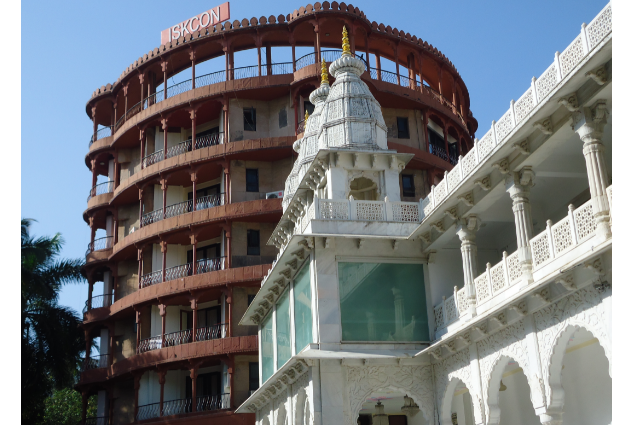
A Luxurious ISKCON Temple
attribution: Rohini, CC BY-SA 3.0 via Wikimedia Commons
Does India Really Deserve The Luxury Of A New Luxurious Temple?
Does India Really need any temples? The foregoing analysis clearly shows the hollowness of the Vedic concept of the Supreme God or gods as well as the silliness of idolatry, and so the answer to this query seems glaring like the mid-day summer Sun.
The Ram-bhakts have resolved to add a new luxurious temple to the sea of temples in India. It's meant to house an idol of an epic character named Rama looked upon by them as an avatar of Vishnu, a Swayambhu god with a belly button. The Shri Ram Janmabhoomi Teerth Kshetra Trust raised Rs 2,100 crore before March 2021 for the construction of the new RamMandir. (₹2,100 crores raised for Ram Temple so far: Trust) Does India Really deserve the luxury of this temple?
I've thrown light on the ignominious plight of Indians. So, I'd like to leave the task of providing the Right answer to the last query for you.
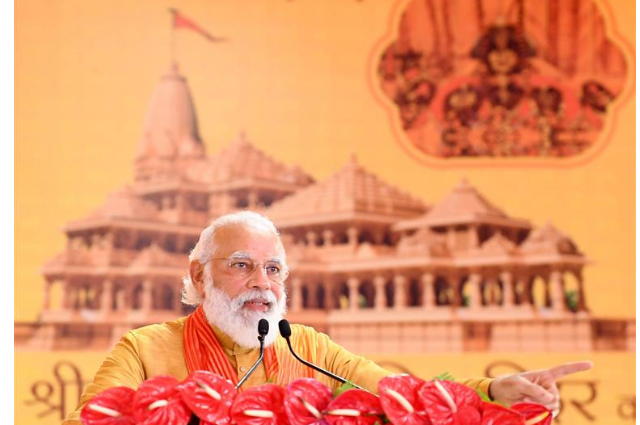
Prime Minister Narendra Modi, an avowed Ram-Bhakta, addressing the gathering at the foundation stone laying ceremony of the Ram-Mandir (in the background: an image of the proposed model of the mandir)
photo attribution: Prime Minister's Office (GODL-India), GODL-India, via Wikimedia Commons
